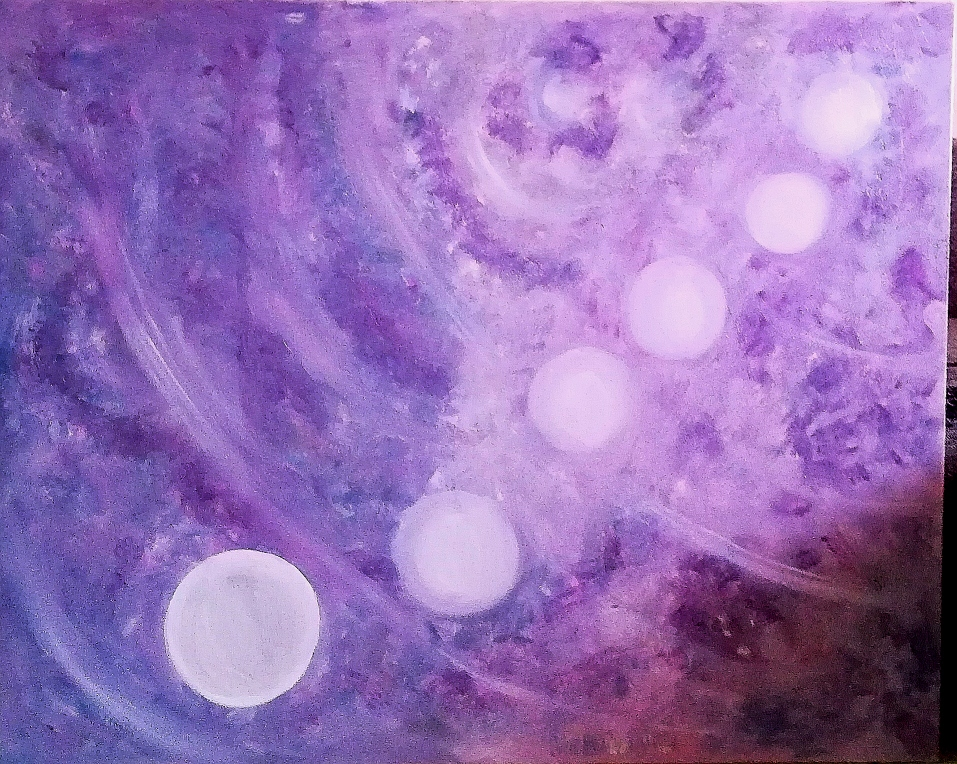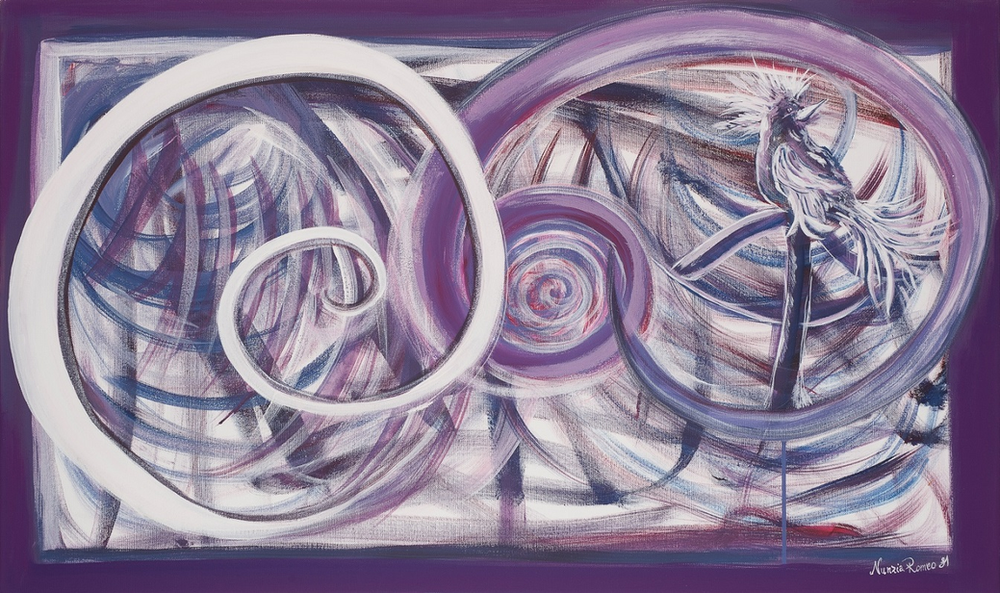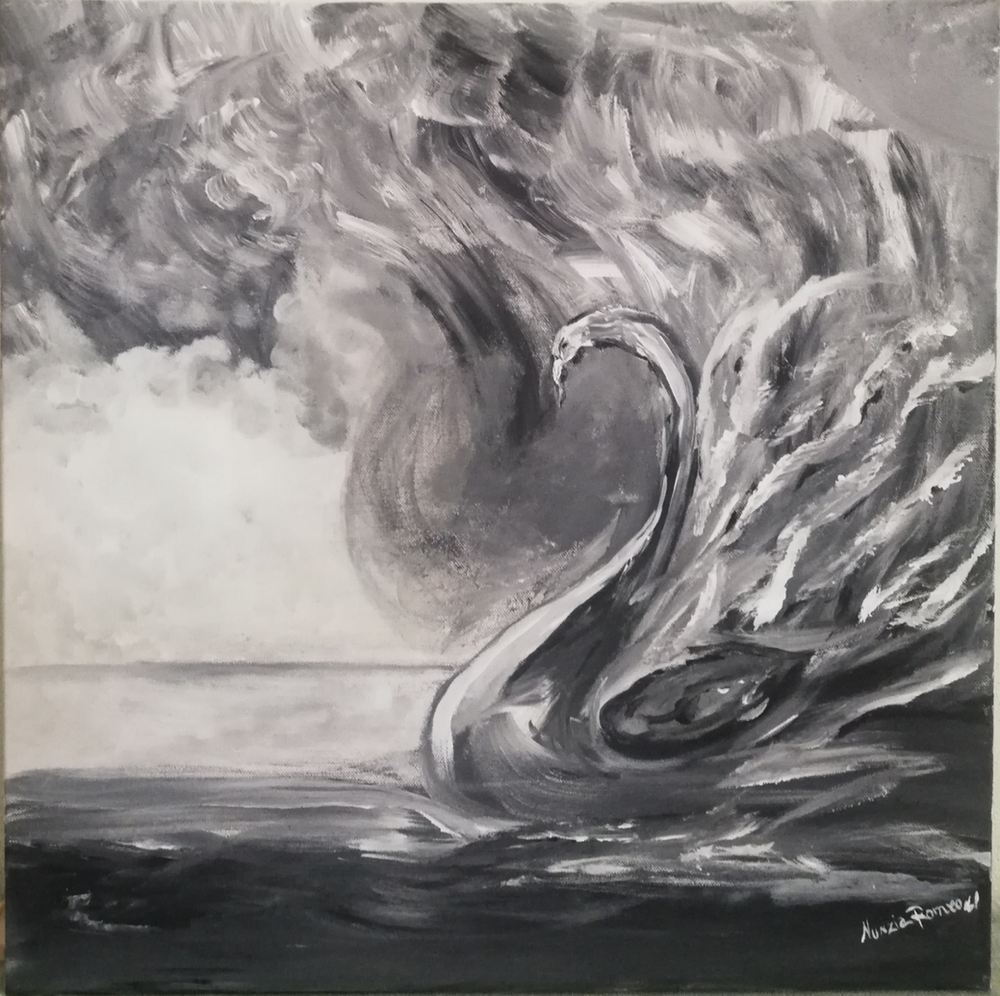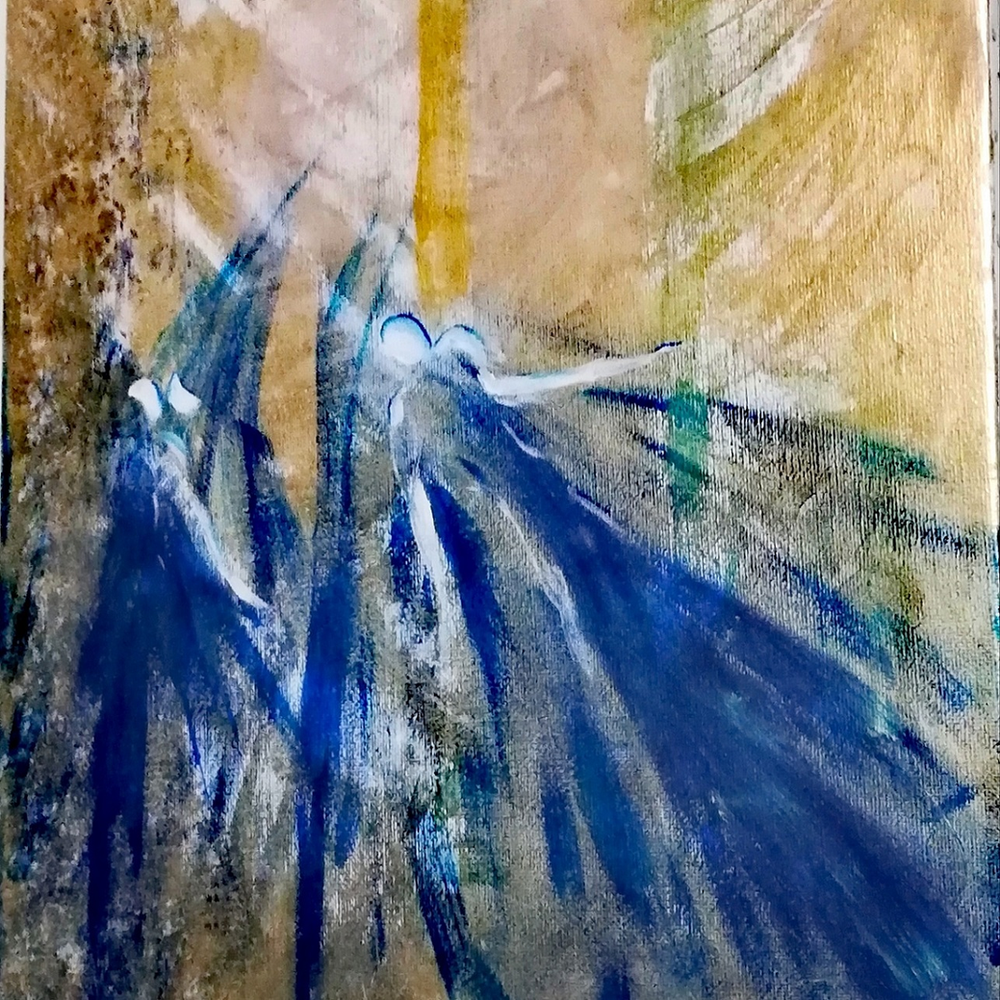
Nunzia Romeo
Esistono persone che scoprono tardivamente il loro impulso creativo e approcciano l’arte dopo un percorso differente durante il quale prendono coscienza del proprio mondo emotivo, assorbono sensazioni che poi, improvvisamente, sentono l’esigenza di manifestare; oppure si verifica un accadimento improvviso, una circostanza imprevista che le mette di fronte alla propria indole che fino al momento precedente non sapevano di avere. Nunzia Romeo, in arte Manù, cresce con la consapevolezza dalla sua naturale inclinazione, quella nei confronti della creazione e decorazione di oggetti che possano entrare in contatto con l’interiorità di chi li osserva o sceglie per adornare le loro case, attraverso la semplicità del tratto così come del messaggio. Apre così, ancora giovane, la sua prima attività di ceramista, un piccolo laboratorio che diviene anche un luogo nel quale insegnare l’arte della creazione con l’argilla e il suo decoro ma anche lo studio dove cominciare a sperimentare, attraverso gli smalti, uno stile figurativo differente da quello della ceramica tradizionale, dando una propria impronta caratterizzata da colori tenui e sfumati, da linee semplici e stilizzate dove il disegno è la base essenziale di un linguaggio minimalista ma al tempo stesso in grado di conquistare gli appassionati attraverso la sua semplicità. Il suo percorso di vita e una circostanza a seguito della quale si è vista costretta a rinunciare al suo laboratorio, l’hanno indotta a misurarsi con la tela, riproponendo il suo linguaggio essenziale e spontaneo, continuando a scegliere la figurazione come espressione del proprio Esistono persone che scoprono tardivamente il loro impulso creativo e approcciano l’arte dopo un percorso differente durante il quale prendono coscienza del proprio mondo emotivo, assorbono sensazioni che poi, improvvisamente, sentono l’esigenza di manifestare; oppure si verifica un accadimento improvviso, una circostanza imprevista che le mette di fronte alla propria indole che fino al momento precedente non sapevano di avere. Nunzia Romeo, in arte Manù, cresce con la consapevolezza dalla sua naturale inclinazione, quella nei confronti della creazione e decorazione di oggetti che possano entrare in contatto con l’interiorità di chi li osserva o sceglie per adornare le loro case, attraverso la semplicità del tratto così come del messaggio. Apre così, ancora giovane, la sua prima attività di ceramista, un piccolo laboratorio che diviene anche un luogo nel quale insegnare l’arte della creazione con l’argilla e il suo decoro ma anche lo studio dove cominciare a sperimentare, attraverso gli smalti, uno stile figurativo differente da quello della ceramica tradizionale, dando una propria impronta caratterizzata da colori tenui e sfumati, da linee semplici e stilizzate dove il disegno è la base essenziale di un linguaggio minimalista ma al tempo stesso in grado di conquistare gli appassionati attraverso la sua semplicità. Il suo percorso di vita e una circostanza a seguito della quale si è vista costretta a rinunciare al suo laboratorio, l’hanno indotta a misurarsi con la tela, riproponendo il suo linguaggio essenziale e spontaneo, continuando a scegliere la figurazione come espressione del proprio

Oltre
dove i toni del viola e la luminosità dei bianchi soffusi sembrano trasportare l’osservatore in un mondo sognante, fatto di desideri inespressi e di sottile speranza che possano trasformarsi in realtà; questo è l’oltre di cui narra il titolo, quell’oltrepassare la contingenza con i suoi apparenti ostacoli per portarsi in una dimensione in cui tutto può essere possibile, o realizzabile, se solo ci si crede davvero. O ancora nella tela Il viaggio,

In viaggio
Nunzia Romeo sembra descrivere il percorso della vita, quel cammino articolato e complesso che ci si trova a intraprendere e che non si può fare a meno di vivere, malgrado i suoi vortici, malgrado la circolarità degli eventi o le difficoltà che spesso si verificano; eppure le tonalità sono tenui, positive, esortative all’accettazione, non passiva bensì consapevole, alla resilienza di trovare il lato positivo e sulla base di quell’insegnamento, continuare a procedere. Nunzia Romeo ci racconterà direttamente, più nei dettagli, la sua storia come ceramista e come artista.
Nunzia, lei ha aperto la sua attività di ceramista ad appena venti anni, come è stato doversi misurare da un lato con la parte artistica e creativa, quella di artigiana decoratrice, e dall’altro con quella più imprenditoriale?
Tra i due approcci non c’è di fatto molta differenza poiché quando si crea, che si tratti di una scultura o di una decorazione, c’è uno studio, una costruzione, un progetto artistico. Per quanto riguarda il lato imprenditoriale non ho trovato difficoltà nel gestirlo, è tutta una questione di organizzazione e di gestione del tempo: la parte creativa e la parte amministrativa e organizzativa sono due aspetti della medesima attività. L’importante è considerare l’espressione creativa come una vera e propria attività imprenditoriale, come un brand da promuovere con progettazione e obiettivi.
Ci racconta qual è stato l’accadimento, l’evento, che l’ha condotta a spostare il suo mezzo espressivo dalla ceramica alla tela?
Gli eventi che mi hanno condotta a manifestare le mie sensazioni ed emozioni sulla tela sono stati molteplici, posso dire che quel periodo, quella fase di qualche tempo fa, sia stato un importante momento di crescita. Con la ceramica ho sempre avuto un approccio più scientifico, basato sullo studio della tecnica e della precisione, mentre per quanto riguarda la pittura su tela è un liberare le emozioni più profonde che affiorano in maniera impulsiva, istintiva. Tuttavia è proprio grazie al bagaglio di conoscenza che ho acquisito lavorando la ceramica che sono in grado di gestire meglio il cromatismo delle opere in accordo con le mie sensazioni.

Il cigno
Qual è la differenza sostanziale, dal punto di vista stilistico ma anche emozionale, tra il decoro su ceramica e la pittura a olio? Quale sente più affine alle sue corde?
La differenza sostanziale è che con la ceramica è necessario avere un controllo maggiore nei tratti, non si possono utilizzare movimenti casuali, tutto è molto controllato e preciso, bisogna immaginare i colori che si vogliono ottenere perché nella prima fase non sono veritieri, cambiano dopo la cottura. La ceramica è una forma espressiva molto complessa, si ha l’impressione di essere un po’ un piccolo chimico; poi, dal punto di vista emozionale una volta finita un’opera affiora sempre la sorpresa nello scoprire il risultato finale e questo diventa stimolo per affinare di volta in volta la tecnica generando una continua evoluzione. La pittura a olio la è molto meno impostata, molto più delicata poiché si può giocare molto di più con le sfumature, con i chiaroscuri, insomma è una forma espressiva più liberatoria. Sono entrambe affini alla mia personalità sebbene, in questa fase della mia vita, la pittura su tela sta facendo uscire la mia vera essenza.

La rinascita
La sua costante evoluzione l’ha condotta recentemente verso l’Espressionismo Astratto che in lei assume connotazioni morbide e sognanti: come mai questo distacco dalla figurazione? Sente forse di poter esprimere con maggiore completezza le sue sensazioni attraverso l’Astrattismo?
Credo che l’evoluzione sia una parte importante nella crescita di ogni artista; per quanto mi riguarda non penso a un distacco dalla figurazione piuttosto a una trasformazione della mia manifestazione espressiva. Quando dipingo mi pongo in posizione di ascolto delle mie emozioni proiettate a narrare il sentire del momento lasciando che i pensieri prendano forma attraverso il colore e dunque il mio approccio attuale è istintivo, ecco perché in questa fase l’Astrattismo è lo stile più affine alla mia interiorità.

Connessioni
So che ha diversi progetti interessanti che stanno prendendo forma e che avranno luogo in un futuro molto vicino, ce ne vuole parlare?
Ho diversi progetti e ne sono molto felice. Qualche tempo fa ho ricevuto la magnifica notizia che una mia opera è stata scelta per il manifesto di un evento internazionale che è in corso per tutta l’estate a Taormina, ed è stata una sorpresa e un onore per me. La stessa opera parteciperà alla fiera internazionale Miami Scope e sarà visionata da visitatori e addetti ai lavori del settore artistico; nel mese di ottobre avrà luogo una collettiva a Ferrara nella quale esporrò una delle sei opere selezionate per il premio Vittorio Sgarbi. Ho in cantiere tanti altri progetti che
stanno prendendo forma ma ancora in fase di definizione, compresa una mia mostra personale.
NUNZIA ROMEO-CONTATTI
Email: nunziaromeo.manu@gmail.com
Facebook: https://www.facebook.com/nuzia.romeo
Instagram: https://www.instagram.com/manuterracotta/
Marta Lock’s interviews:
Nunzia Romeo, from the art of ceramics to the magic of painting
There are some people who discover their creative impulse late in life and approach art after a different path during which they become aware of their emotional world, absorbing sensations which they then suddenly feel the need to express; or there is a sudden event, an unforeseen circumstance which confronts them with their own nature which they did not know they had until the previous moment. Nunzia Romeo, in art Manù, grew up with the awareness of her natural inclination, that towards the creation and decoration of objects that can come into contact with the interiority of those who observe them or choose them to adorn their homes, through the simplicity of the stroke as well as the message. Thus, while still young, she opened her first activity as a ceramist, a small workshop that also became a place in which to teach the art of creating with clay and its decoration, but also a studio in which to begin experimenting, through enamels, with a figurative style different from that of traditional ceramics, giving her own imprint characterised by soft and shaded colours, simple and stylised lines where the design is the essential basis of a minimalist language but at the same time able to win over enthusiasts through its simplicity. Her life path and a circumstance that forced her to give up her workshop led her to measure herself against the canvas, re-proposing her essential and spontaneous language, continuing to choose figuration as the expression of her artistic self; through oil painting Nunzia Romeo discovers a new dimension, one that allows her to enter a wider, more complete communicative world, by virtue of which she can release emotions and sensations that until then had been held inward. The gradually deeper contact with this irrational and intense dimension leads her towards a greater awareness not only of her own inner strength but also of the communicative capacity that her works have, thanks also to her courage to get involved again and participate in national group exhibitions where her paintings have been noticed and appreciated by a public of collectors and experts in the field. Her natural tendency to evolve has led her to modify her expressive style once again, abandoning figuration in a more incisive manner from time to time, although in some canvases it remains almost as if it were a whisper of rationality guiding the eye towards a subsequent fade, towards Abstractionism, even though Nunzia Romeo’s canvases are much more closely linked to Abstract Expressionism. It is precisely the incisiveness of the emotional message that emerges clearly and strongly from artworks such as Oltre (Beyond), where the violet tones and the luminosity of the soft whites seem to transport the observer into a dreamy world, made up of unspoken desires and subtle hope that they may become reality; this is the beyond of which the title speaks, that of going over contingency with its apparent obstacles to reach a dimension in which everything may be possible, or achievable, if one really believes in it. Or again in the painting Il viaggio (The journey), Nunzia Romeo seems to describe the journey of life, that articulated and complex path that one finds oneself undertaking and that cannot help but live, despite its whirlwinds, despite the circularity of events or the difficulties that often occur; yet the tones are soft, positive, exhorting acceptance, not passive but conscious, the resilience of finding the positive side and on the basis of that teaching, continuing to proceed. Nunzia Romeo will tell us directly, in more detail, her story as a ceramist and as an artist.
Nunzia, you started your activity as a ceramist when you were just 20 years old, how was it to have to deal with the artistic and creative side, that of a craftswoman decorator, on the one hand, and the more entrepreneurial side on the other?
There isn’t really much difference between the two approaches because when you create, whether it’s a sculpture or a decoration, there is a study, a construction, an artistic project. As far as the business side is concerned, I have not found it difficult to manage, it is all a question of organisation and time management: the creative part and the administrative and organisational part are two aspects of the same activity. The important thing is to consider creative expression as a real business activity, as a brand to be promoted with planning and objectives.
Can you tell us about the event that led you to shift your means of expression from ceramics to canvas?
The events that led me to manifest my feelings and emotions on canvas were many, and I can say that that period, that phase of some time ago, was an important moment of growth. I have always had a more scientific approach to ceramics, based on the study of technique and precision, while painting on canvas is a way of releasing the deepest emotions that surface in an impulsive, instinctive way. However, it is thanks to the knowledge I have gained from working with ceramics that I am better able to manage the colour scheme of my artworks in accordance with my feelings.
What is the substantial difference, from a stylistic but also emotional point of view, between decoration on ceramic and oil painting? Which one do you feel is closer to your heart?
The substantial difference is that with ceramics you need to have greater control over your strokes, you cannot use random movements, everything is very controlled and precise, you have to imagine the colours you want to achieve because in the first phase they are not true, they change after firing. Ceramics is a very complex form of expression, you have the impression of being a little chemist; then, from an emotional point of view, once you have finished a work, you are always surprised to discover the final result and this becomes a stimulus to refine the technique from time to time, generating a continuous evolution. Oil painting is much less set in stone, much more delicate, as you can play much more with nuances and chiaroscuro, in short, it is a more liberating form of expression. They are both akin to my personality although, at this stage of my life, painting on canvas is bringing out my true essence.
Your constant evolution has recently led you towards Abstract Expressionism, which takes on soft, dreamy connotations: why this detachment from figuration? Do you feel that you can express your feelings more fully through abstraction?
I believe that evolution is an important part of the growth of every artist; as far as I am concerned, I do not think of a detachment from figuration but rather of a transformation of my expressive manifestation. When I paint, I put myself in a position of listening to my emotions, projecting them to narrate the feelings of the moment, letting the thoughts take shape through the colour, and therefore my current approach is instinctive, which is why at this stage Abstractionism is the style most akin to my interiority.
I know that you have several interesting projects that are taking shape and will take place in the very near future, would you like to tell us about them?
I have several projects and I am very happy about them. Some time ago I received the wonderful news that one of my artworks was chosen for the poster of an international event that is taking place all summer in Taormina, which was a surprise and an honour for me. The same work will participate in the international fair Miami Scope and will be viewed by visitors and experts in the art sector; in October there will be a group exhibition in Ferrara where I will exhibit one of the six works selected for the Vittorio Sgarbi Prize. I have many other projects in the pipeline that are taking shape but are still being defined, including a solo exhibition.
